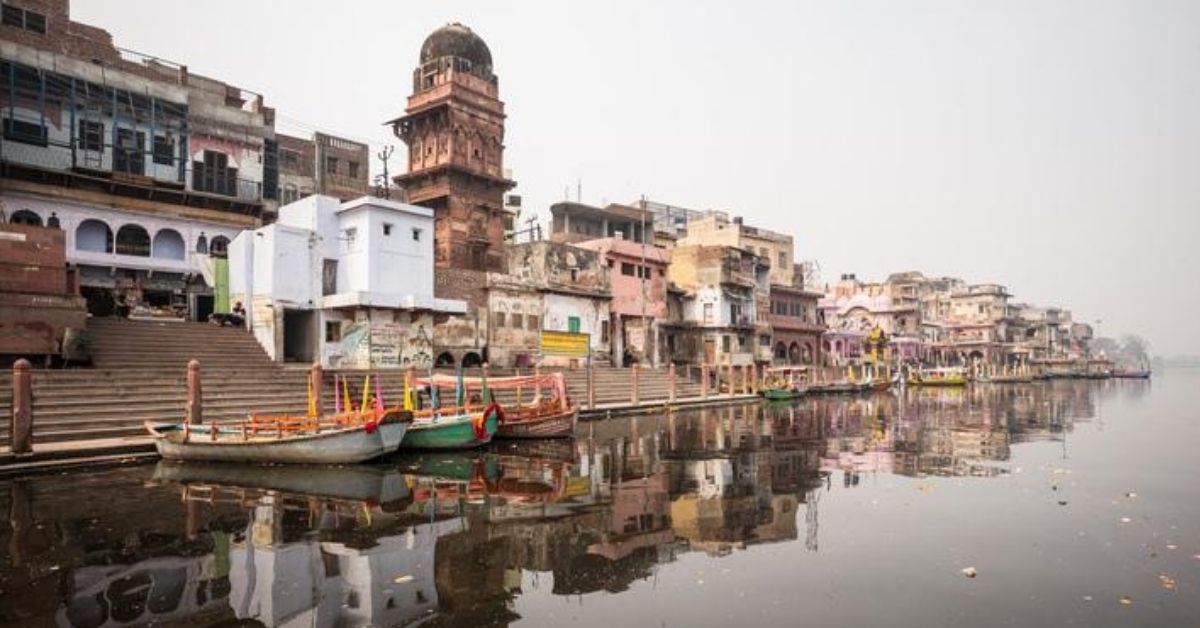IIT-D Finds the ‘Greatest Threat to Human Health’ in Yamuna’s Water: Things to Know
A team of researchers from IIT-Delhi conducted a study across 20 major sewer drains and 5 prominent sites on river Yamuna in New Delhi. And what they found is a health threat we can no longer afford to ignore.

The Yamuna, a sacred river, and the second-largest tributary of the Ganges is one the most polluted rivers in the country. Two months after the COVID-19 lockdown, Delhi Pollution Control Committee (DPCC) had found that compared to the pre-lockdown days, river Yamuna was cleaner by around 33%.
But once the lockdown was eased and industries resumed their work, the pollution was back. According to ANI, toxic foam was seen in river Yamuna at Okhla Barrage in July. This foam is formed due to a rise in pollution level, and is hazardous for people who live in nearby areas.
But it is not just this one threat that Yamuna poses.
In 2017, the World Health Organization (WHO) had published its first list of Antibiotic-Resistant Priority Pathogens that pose the greatest threat to human lives. The list published by WHO is divided into three categories, based on the urgency for new antibiotics: critical, high, and medium priority.
In that same year, a research paper published by the Indian Institute of Technology, Delhi, proclaimed that River Yamuna contains certain multi-drug resistant bacteria that fall under the critical category.
WHO Priority Pathogen List
The criteria for selecting pathogens on the list are –
How deadly the infections they cause are.
Duration of the treatment and whether it requires long hospital stays.
How easily they spread between animals, from animals to humans, and from person to person.
Whether the spread of the infection can be prevented.
Critical
This category includes multidrug-resistant bacteria that can pose as threats in hospitals, and among patients whose care requires devices such as ventilators and catheters. The viruses that fall under this category are
- Acinetobacter baumannii
- Pseudomonas aeruginosa
- Enterobacteriaceae
According to the report, these bacterias have become resistant to a large number of antibiotics, including the best ones such as carbapenems and third-generation cephalosporins. They can cause severe and often deadly infections such as bloodstream infections and pneumonia.
High risk:
- Enterococcus faecium
- Staphylococcus aureus
- Helicobacter pylori
- Campylobacter spp
- Salmonellae
- Neisseria gonorrhoeae
Medium risk:
- Streptococcus pneumoniae
- Haemophilus influenzae
- Shigella spp
The pathogens and bacteria under these two categories can cause common diseases such as gonorrhea and food poisoning.
About the IIT Study on River Yamuna
A team of three researchers from IIT-D conducted a microbial analysis study across 20 major sewer drains and 5 prominent sites on river Yamuna in New Delhi. Microbial Analysis is a method of testing water to estimate the numbers of bacteria present in it and what kind of bacteria they are.
According to estimates made by the Central Pollution Control Board (CPCB), Delhi generates 3,000 million litres of sewage per day. More than half of this amount does not receive any sort of treatment and is allowed to flow into the Yamuna, unchecked.
The researchers collected samples of water in both summer and winter seasons to check the seasonal variation of antibiotic-resistant bacteria.
Results
The samples indicated an abundant presence of coliforms which are bacteria present in the feces of all warm-blooded animals and humans, Extended-spectrum beta-lactamases (ESBL) resistant bacteria, and carbapenem-resistant bacteria which are enzymes that are resistant to most antibiotics, including penicillins.
According to the study, a major reason for an increase in the pollution of the river is poor connectivity between drains and sewage treatment plants. This has caused the discharge of untreated sewage at different locations of the river Yamuna and thereby breeding of these pathogens.
The COVID-19 pandemic and the lockdown that followed has made humans understand that nature can heal, and undo the damage done, only if we stay away.
This story made me
- 97
- 121
- 89
- 167
Tell Us More
We bring stories straight from the heart of India, to inspire millions and create a wave of impact. Our positive movement is growing bigger everyday, and we would love for you to join it.
Please contribute whatever you can, every little penny helps our team in bringing you more stories that support dreams and spread hope.



















